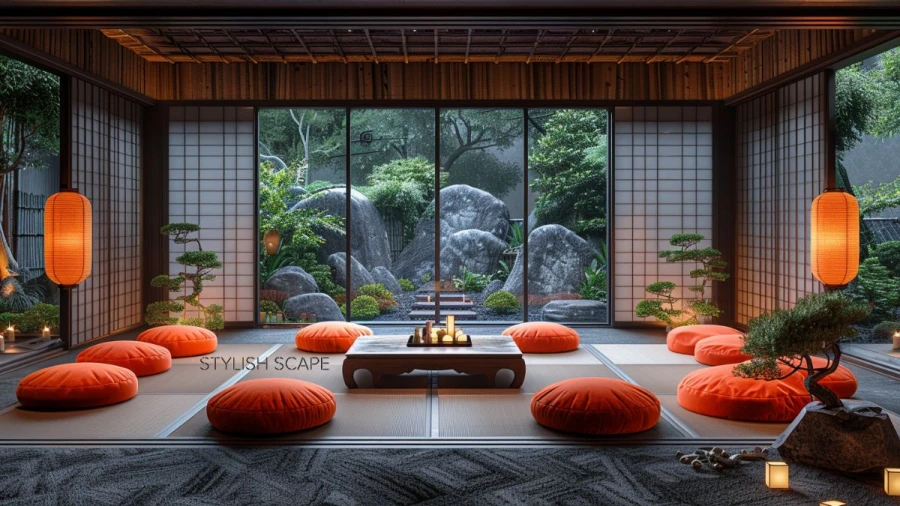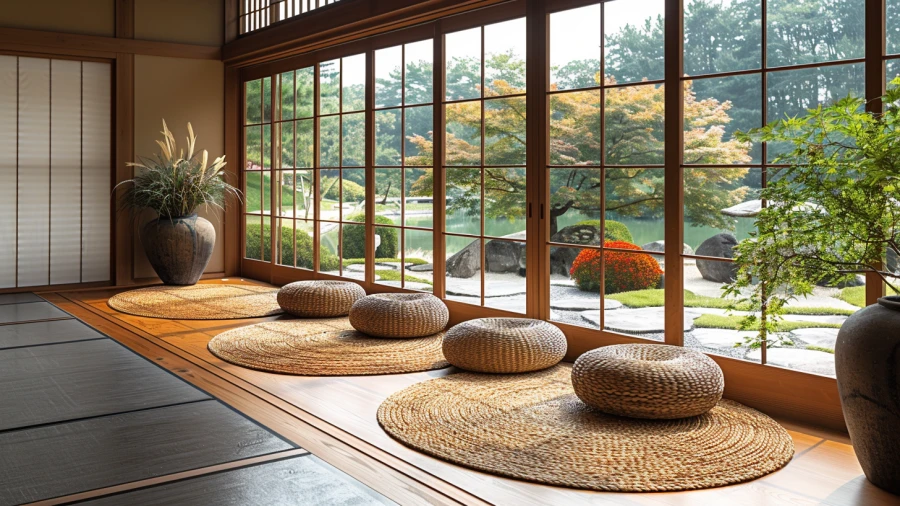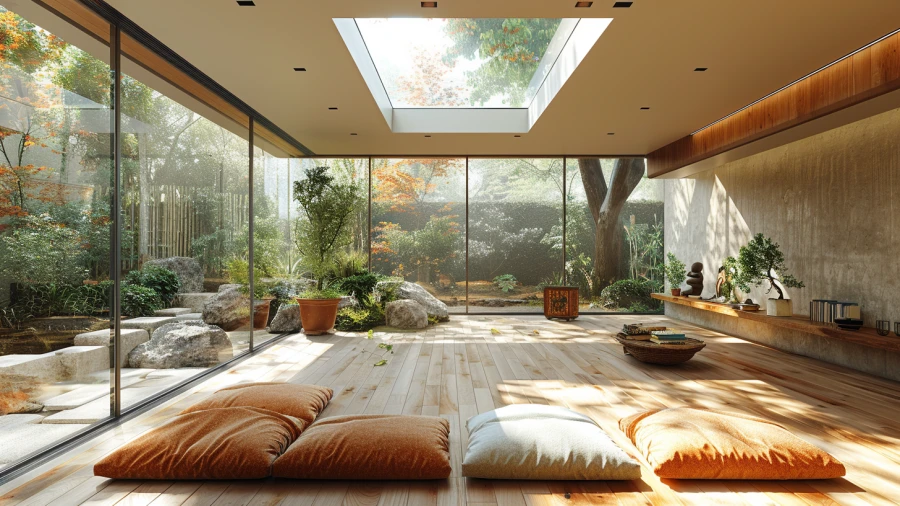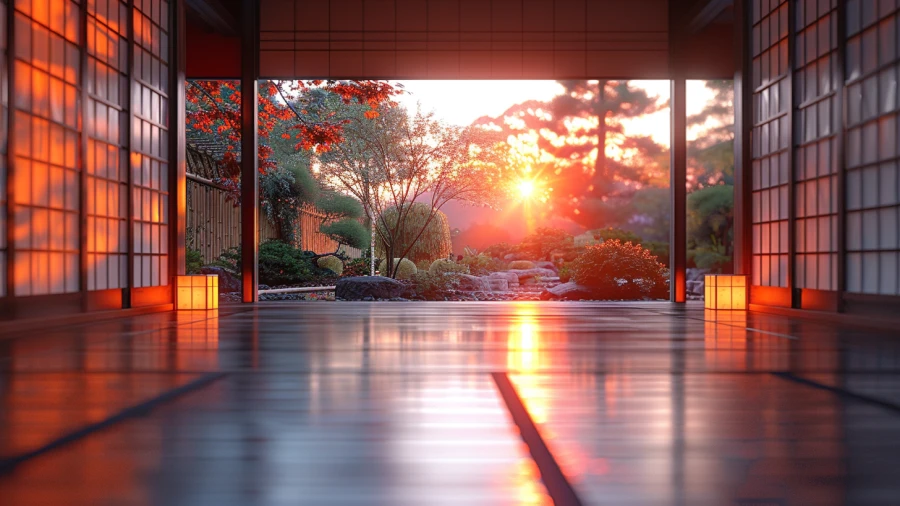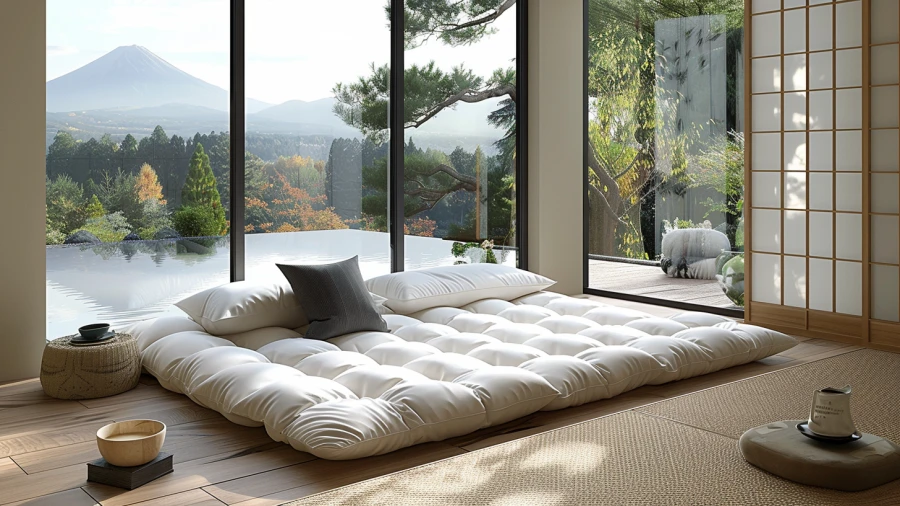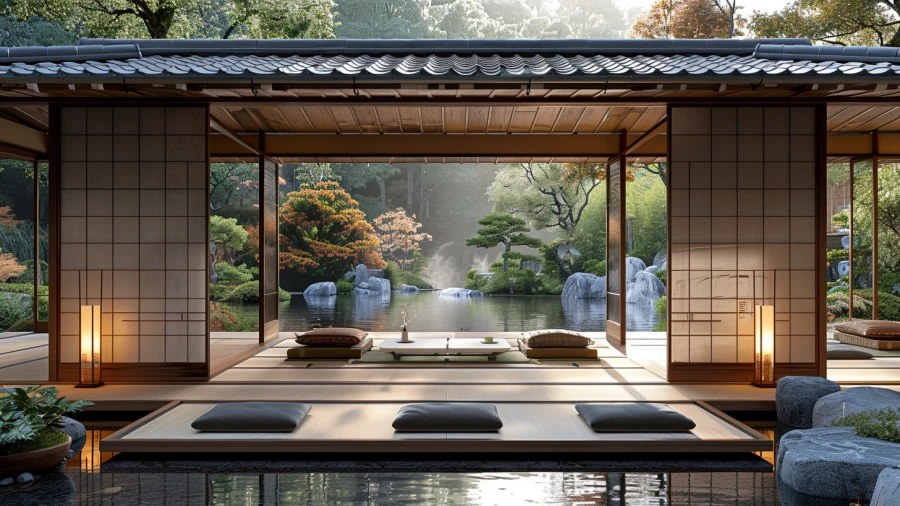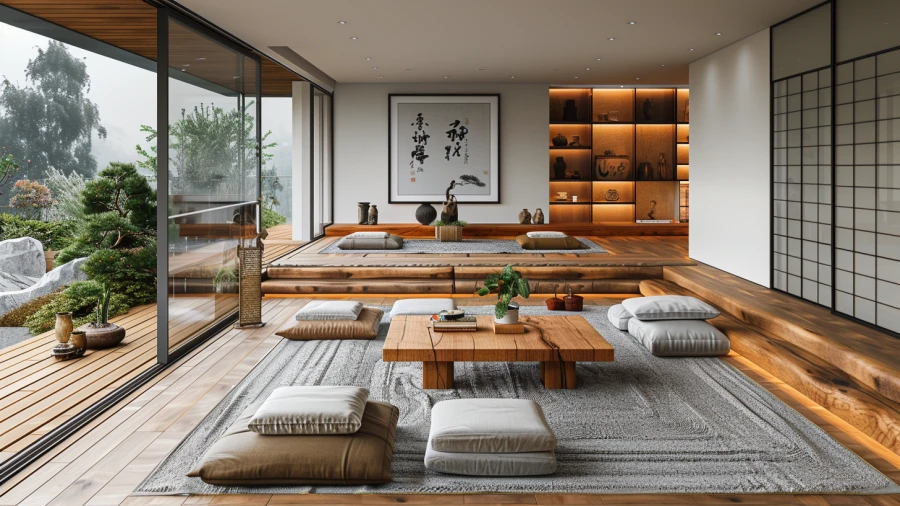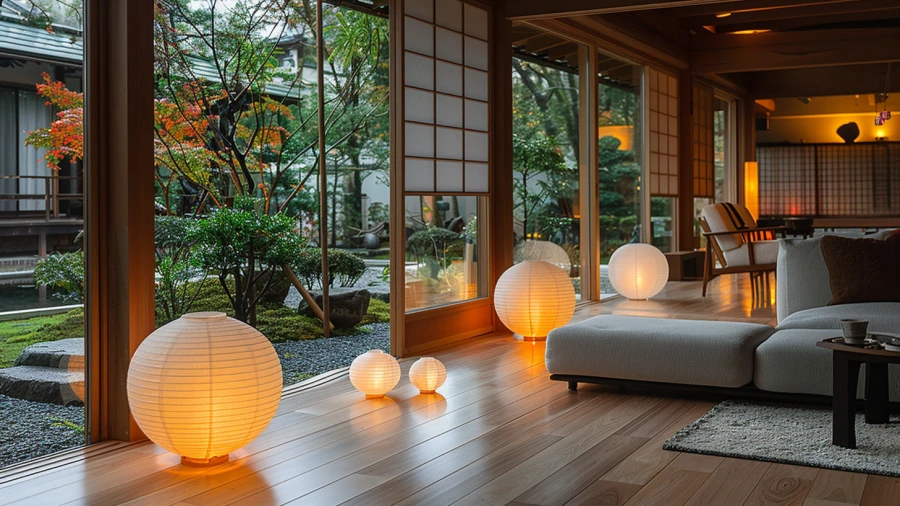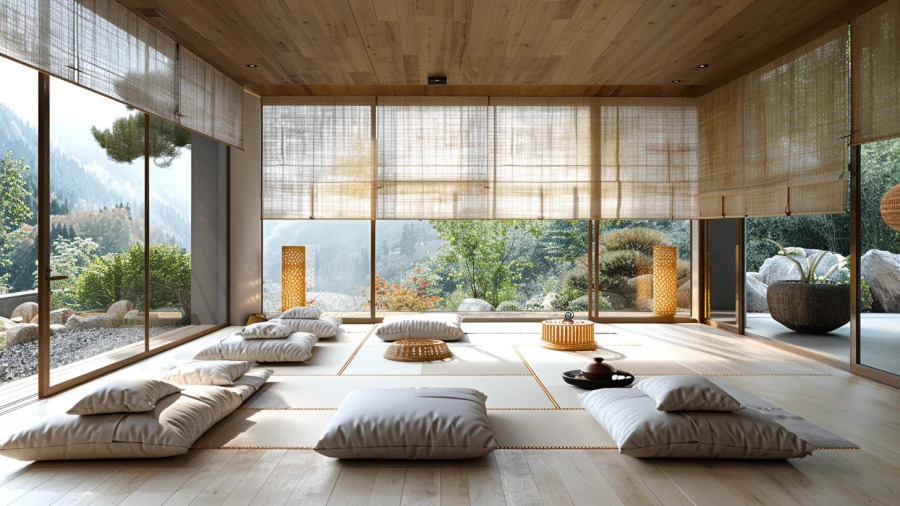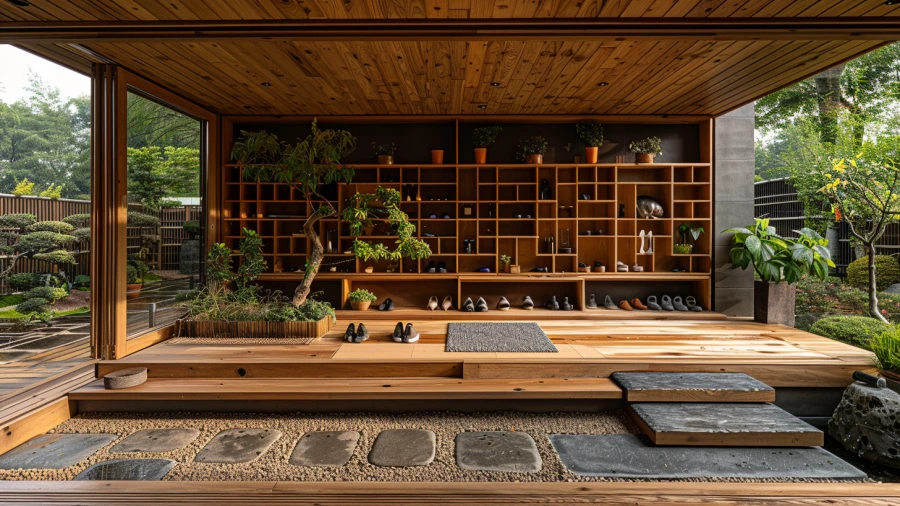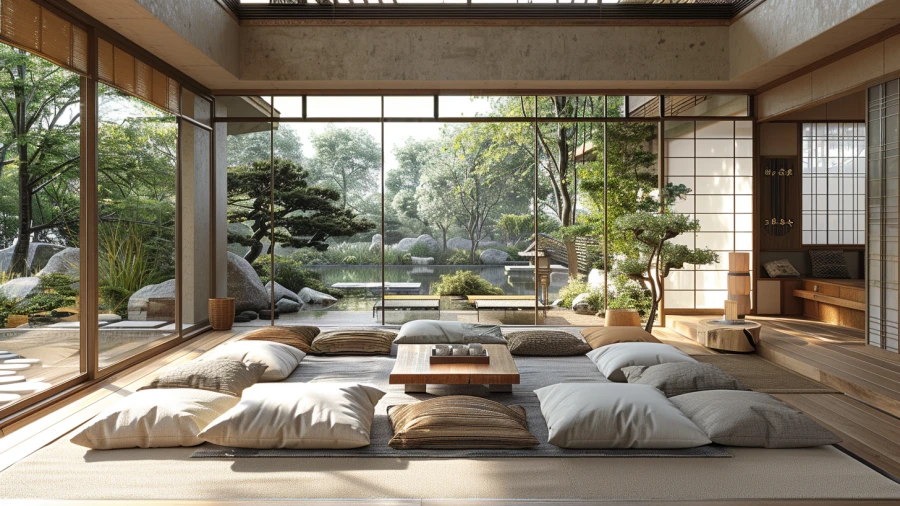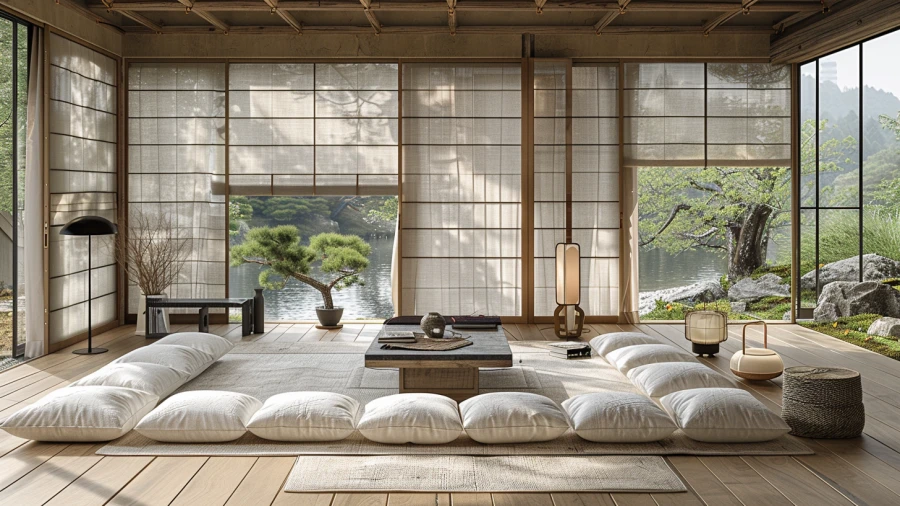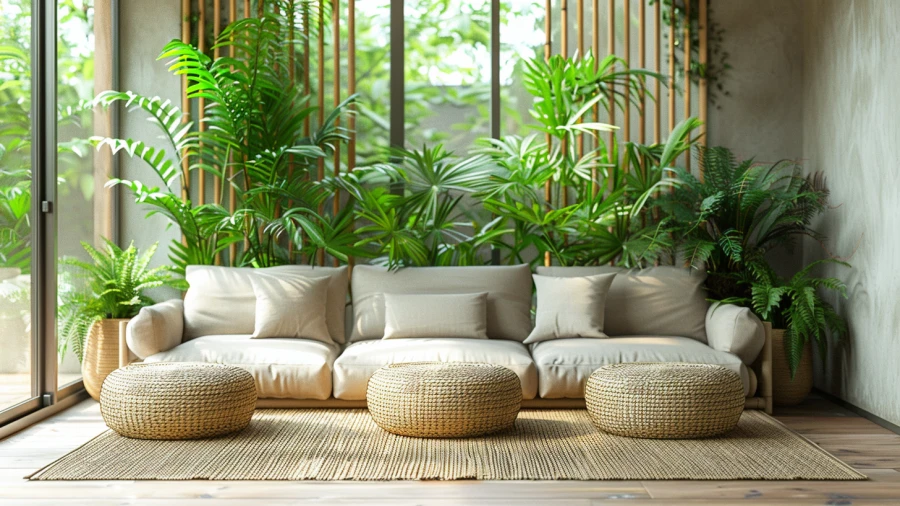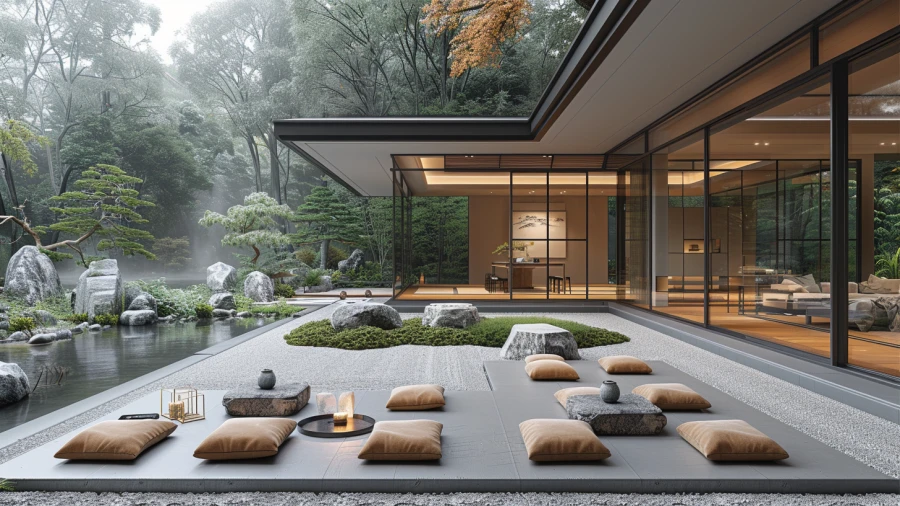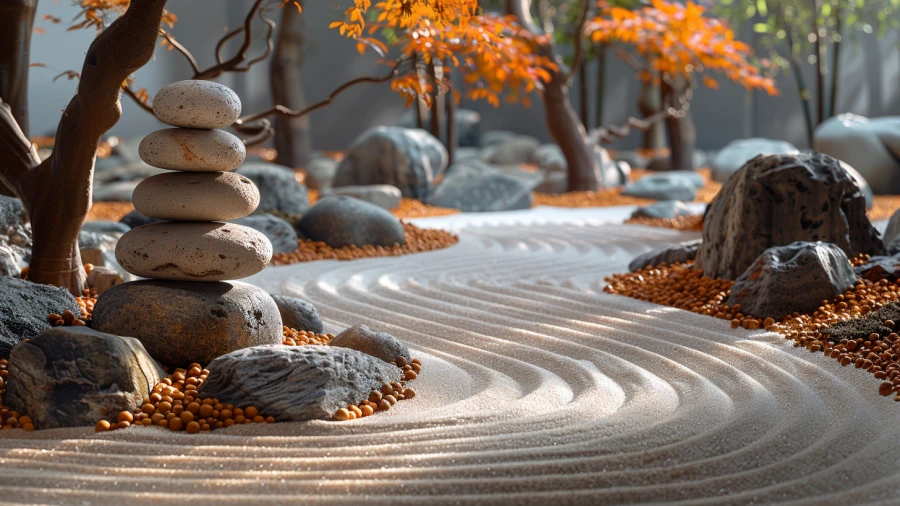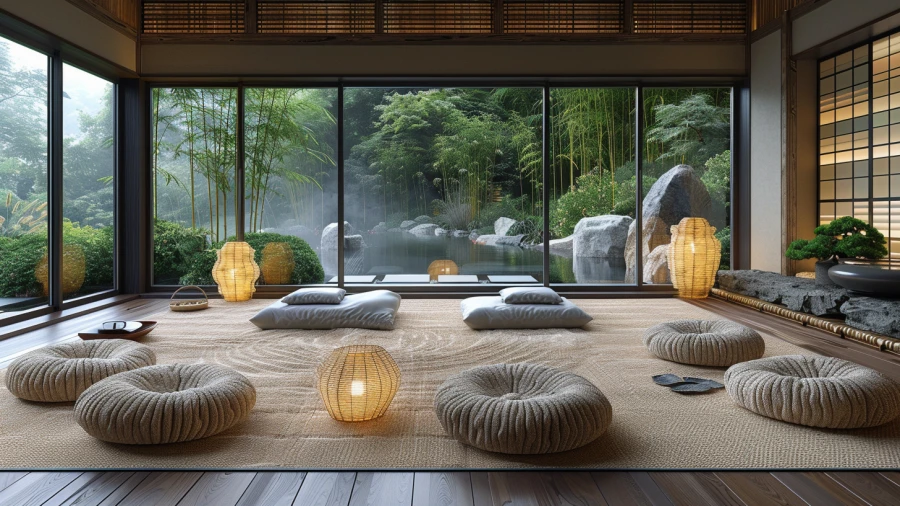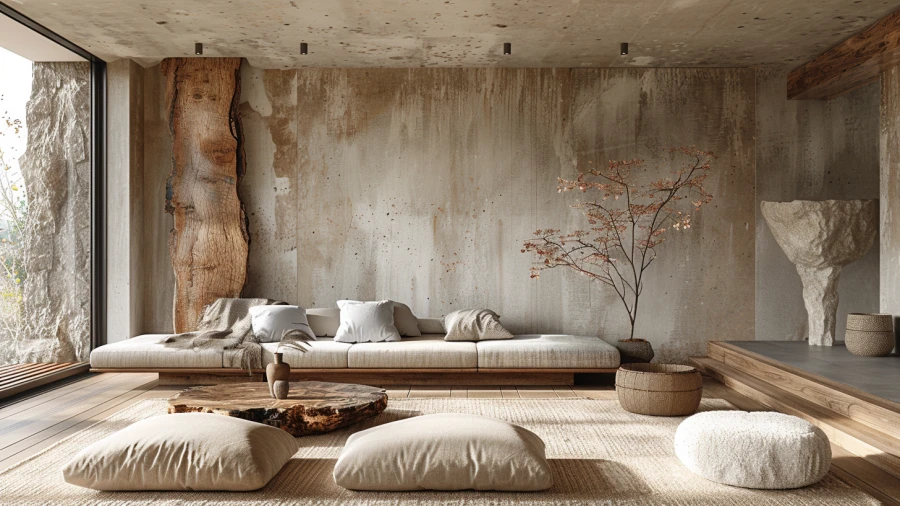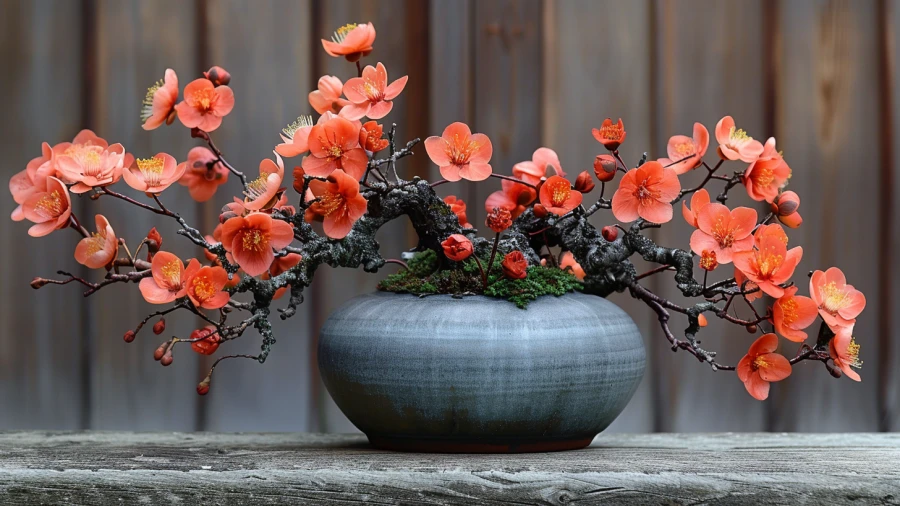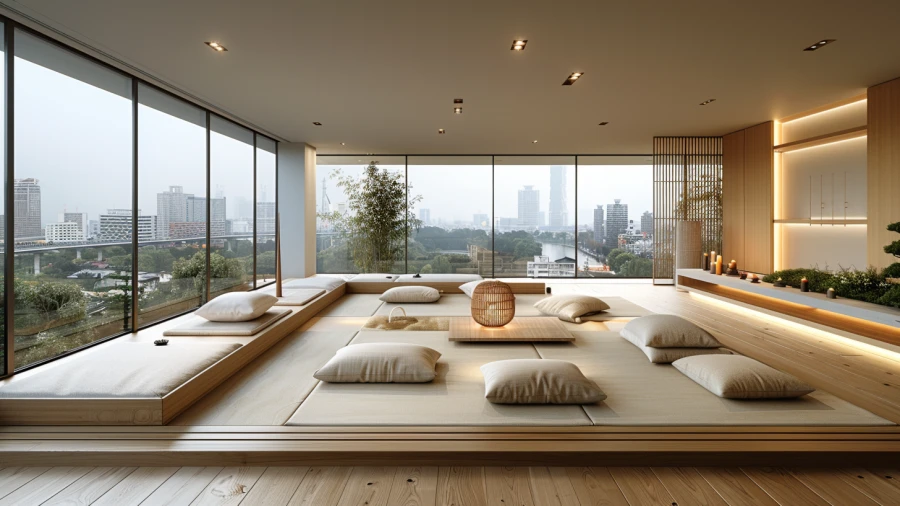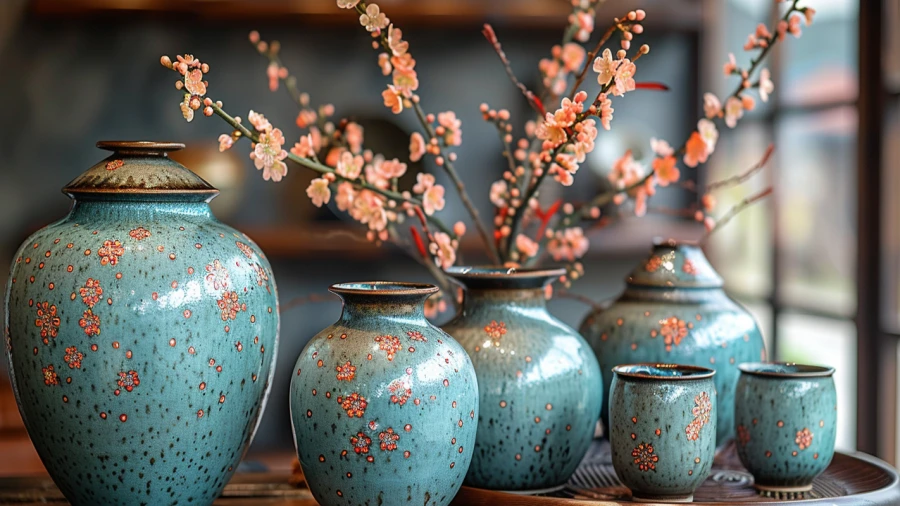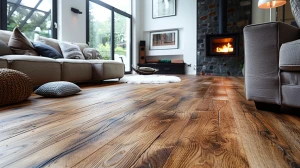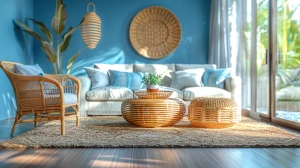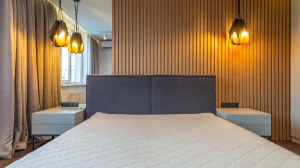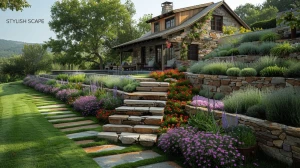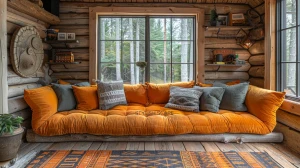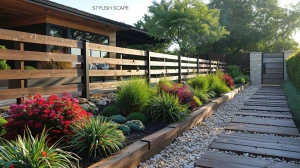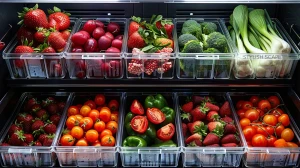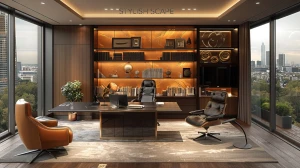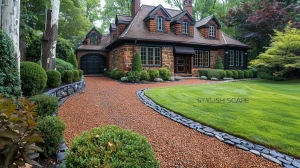
Harmony in Simplicity with 20 Japanese Interior Design
Discover Japanese interior design ideas that embrace simplicity, functionality, and natural elements, Transform your space with Japanese interior design principles, using neutral colors, natural materials, and minimalistic decor to create a serene and harmonious environment.
by Priyanka P
Updated Sep 06, 2024
On This Page
- Japanese Interior Design
- Tatami Flooring for Japanese Interiors
- Maximized Natural Light
- Shoji Partitions for Japanese Rooms
- Minimal Artworks
- Futon Mattresses in Japanese Homes
- Wooden Sliding Doors
- Low-Center Furniture for Japanese Spaces
- Japanese Lighting Fixtures
- Sliding Panels in Japanese Design
- Genkan Entryways
- Natural Wood Accents for Japanese Interiors
- Folding Room Dividers
- Indoor Plants in Japanese Homes
- Low-Profile Shelving
- Zen Gardens for Japanese Rooms
- Natural Material Textures
- Wabi-Sabi Style in Japanese Interiors
- Ikebana Arrangements
- Neutral Colors in Japanese Design
- Japanese Ceramic Pieces
- Why is the Use of Neutral Colors Important in Japanese Interior Design?
Japanese Interior Design
Japanese interior design focuses on simplicity, functionality, and a connection to nature. It often features clean lines, minimal furniture, and natural materials like wood and bamboo. The design emphasizes open spaces and uses neutral colors to create a calm and serene environment. Key elements include Tatami mats, Shoji screens, and low-profile furniture. Indoor plants and Zen gardens are also common, adding a touch of nature. The goal is to create a peaceful, uncluttered space that promotes relaxation and harmony, reflecting traditional Japanese values of balance and mindfulness.
Tatami Flooring for Japanese Interiors
Tatami flooring, a traditional Japanese element, brings warmth and authenticity to any space. Made from straw or rice straw and covered with woven rush grass, Tatami mats offer a natural, textured surface that enhances the room’s aesthetic. They are typically used in traditional Japanese rooms, known as washitsu, but can also be integrated into modern interiors for a touch of elegance. When using Tatami mats, arrange them in a grid pattern for a classic look or mix them with contemporary furnishings for a unique contrast. Their natural materials contribute to a serene atmosphere, making them ideal for bedrooms, meditation rooms, or any space where comfort and tranquility are desired. Tatami mats also have practical benefits, such as sound absorption and insulation, adding both beauty and functionality to your home.
Maximized Natural Light
Maximizing natural light is a key aspect of Japanese interior design, reflecting the philosophy of harmony with nature. Large windows, skylights, and open spaces are utilized to flood interiors with daylight, creating a bright and airy atmosphere. Natural light enhances the sense of openness and helps to connect the indoors with the outside environment. To optimize natural light, consider using sheer curtains or blinds that diffuse light rather than block it completely. Glass doors and reflective surfaces can also help distribute light throughout the room. Emphasizing natural light not only improves the mood and functionality of the space but also aligns with Japanese principles of simplicity and tranquility, making the home feel more serene and inviting.
Shoji Partitions for Japanese Rooms
Shoji partitions are a classic element of Japanese interior design, offering both functionality and aesthetic appeal. These sliding doors or screens, traditionally made with wooden frames and translucent rice paper, allow light to pass through while providing privacy and separation between spaces. Shoji screens are versatile and can be used to divide rooms, cover windows, or even as decorative elements. They help to create a serene and open feeling within a room, maintaining a connection to the outside while defining different areas. Modern variations may use glass or other materials, but the traditional Shoji screen remains a symbol of elegance and simplicity, enhancing the peaceful atmosphere of a Japanese-inspired interior.
Minimal Artworks
In Japanese interior design, minimal artworks are chosen to complement the space without overwhelming it. This approach aligns with the principle of simplicity, focusing on a few carefully selected pieces that enhance the room's overall aesthetic. Minimalist art often features clean lines, subtle colors, and abstract forms, reflecting the beauty of simplicity and the concept of wabi-sabi—embracing imperfections. Artwork might include a single painting, a small sculpture, or a minimalist wall hanging. The goal is to create a harmonious environment where each piece serves a purpose and contributes to the room’s tranquil ambiance, avoiding clutter and maintaining a clean, uncluttered look.
Futon Mattresses in Japanese Homes
Futon mattresses are a staple of Japanese interiors, offering a practical and space-saving bedding solution. Traditionally placed on Tatami mats, futons are thin, foldable mattresses that can be easily stored away when not in use. This flexibility makes them ideal for small spaces where a permanent bed might be impractical. Futons are typically made with natural materials such as cotton or wool, providing comfort and breathability. When not in use, they can be rolled up and stored in a closet, freeing up floor space. This design reflects the Japanese emphasis on minimalism and functionality, making futon mattresses a perfect choice for contemporary and traditional Japanese-style homes alike.
Wooden Sliding Doors
Wooden sliding doors are a hallmark of Japanese interior design, combining functionality with timeless elegance. These doors, known as fusuma or shoji, are crafted from wood and feature sliding mechanisms that save space compared to traditional hinged doors. They can be used to separate rooms, create partitions, or provide access to outdoor areas. The use of natural wood in these doors adds warmth and texture to the space, while the sliding design maintains a clean, uncluttered look. Wooden sliding doors often incorporate decorative elements such as latticework or paper panels, enhancing their visual appeal while staying true to traditional Japanese aesthetics. They are a versatile and stylish addition to any interior.
Low-Center Furniture for Japanese Spaces
Low-center furniture is a defining feature of Japanese interior design, promoting a sense of calm and connection with the floor. This style includes low tables, benches, and seating that sit close to the ground, reflecting traditional Japanese practices. The low-profile design encourages a relaxed posture and creates a harmonious balance within the room. In addition to its aesthetic appeal, low-center furniture also helps to maximize space and create a more open, airy environment. This design approach is perfect for both traditional Japanese interiors and modern spaces seeking a minimalist touch, contributing to a serene and functional living area.
Japanese Lighting Fixtures
Japanese lighting fixtures are designed to enhance the tranquil and elegant atmosphere of Japanese interiors. These fixtures often feature simple, clean lines and natural materials, such as paper lanterns, wooden frames, or ceramic shades. The lighting is typically soft and diffused, creating a warm and inviting glow that adds to the serene ambiance. Traditional Japanese lighting, like Andon lanterns, provides a gentle, ambient light that reflects the principles of minimalism and harmony with nature. Modern interpretations may use LED technology while maintaining the classic design elements, making Japanese lighting fixtures both practical and aesthetically pleasing for any interior.
Sliding Panels in Japanese Design
Sliding panels are a versatile feature in Japanese interior design, used to create flexible and functional living spaces. These panels can be made of wood, paper, or fabric and are designed to slide open or closed, allowing for easy reconfiguration of a room. They are often used as room dividers, closet doors, or window coverings, providing privacy and separation without the bulk of traditional doors. The sliding mechanism saves space and contributes to a minimalist look, aligning with Japanese principles of simplicity and efficiency. Whether in a traditional or modern setting, sliding panels offer a practical solution while maintaining a clean, elegant aesthetic.
Genkan Entryways
The Genkan is a traditional Japanese entryway system designed to keep the interior of the home clean and organized. This space, usually found just inside the front door, serves as a designated area for removing shoes before entering the main living areas. It often features a raised platform and built-in shoe racks, providing a practical and stylish solution for storing footwear. The Genkan reflects the Japanese emphasis on cleanliness and order, creating a clear separation between the outside and inside of the home. Adding a doormat or decorative elements such as plants can enhance the Genkan’s functionality and aesthetic appeal, making it an integral part of Japanese interior design.
Natural Wood Accents for Japanese Interiors
Natural wood accents play a crucial role in Japanese interior design, adding warmth and texture to the space. Wood is a fundamental material in traditional Japanese architecture, used in features such as flooring, walls, and furniture. Incorporating natural wood elements into modern interiors helps to create a connection with nature and brings a sense of tranquility to the home. Wood can be used in various ways, from exposed beams and wooden flooring to furniture pieces and decorative accents. The natural grain and color variations of wood enhance the room’s aesthetic while contributing to a calming, organic atmosphere that is central to Japanese design principles.
Folding Room Dividers
Folding room dividers are a practical and stylish solution for creating flexible spaces in Japanese interiors. These dividers, often made of wood or fabric, can be folded and repositioned to adjust the layout of a room as needed. They provide a versatile way to separate living areas, create private nooks, or simply add a decorative touch. In traditional Japanese design, folding screens (known as byōbu) are used to define spaces and add elegance to the interior. Modern versions maintain this functionality while incorporating contemporary materials and designs, making them a practical choice for both traditional and modern Japanese-inspired interiors.
Indoor Plants in Japanese Homes
Indoor plants are a key element in Japanese interior design, bringing a touch of nature indoors and enhancing the overall ambiance. Plants such as Bonsai, bamboo, and ferns are commonly used to add greenery and tranquility to living spaces. The Japanese practice of incorporating plants reflects a deep respect for nature and a desire to create a serene, harmonious environment. Indoor plants can be used to complement minimalist decor, adding color and texture without overwhelming the space. They also contribute to improved air quality and a sense of calm, making them an important feature of Japanese-inspired interiors.
Low-Profile Shelving
Low-profile shelving is a design choice that complements the minimalist and functional aspects of Japanese interiors. These shelves are designed to sit close to the ground, maintaining a clean, unobtrusive appearance while providing practical storage solutions. Low-profile shelving helps to keep the room open and uncluttered, aligning with the Japanese emphasis on simplicity and space efficiency. It can be used to display decorative items, store books, or organize everyday essentials without dominating the room’s aesthetic. This design approach enhances the sense of openness and balance, making it an ideal choice for modern Japanese-style homes.
Zen Gardens for Japanese Rooms
Zen gardens, also known as Karesansui, are a traditional Japanese design element that adds a calming, meditative touch to any room. These gardens typically feature sand or gravel, carefully raked into patterns, along with rocks, pebbles, and minimalist decorations. Zen gardens are designed to evoke a sense of tranquility and simplicity, reflecting the principles of Zen Buddhism. They can be placed in living areas, offices, or meditation rooms to create a serene atmosphere. Incorporating a Zen garden into your interior design not only enhances the room’s aesthetic but also provides a space for contemplation and relaxation.
Natural Material Textures
Natural material textures are a hallmark of Japanese interior design, adding depth and warmth to the space. Materials such as bamboo, wood, straw, and stone are used to create a connection with nature and enhance the room’s organic feel. These textures can be incorporated through flooring, wall coverings, furniture, and decor items. Natural materials contribute to a calming, harmonious environment by reflecting the Japanese principles of simplicity and balance. Whether used in large-scale features or as small decorative accents, natural material textures help to create a welcoming and serene atmosphere that is central to Japanese-inspired interiors.
Wabi-Sabi Style in Japanese Interiors
Wabi-sabi is a Japanese aesthetic that embraces imperfection and the beauty of the natural world. This design style values simplicity, authenticity, and the passage of time, focusing on the unique character and natural wear of objects. In Japanese interiors, wabi-sabi is reflected in the use of raw materials, uneven surfaces, and handmade items that tell a story. This approach creates a serene and introspective atmosphere, celebrating the beauty of imperfection and the natural aging process. Wabi-sabi design encourages a mindful appreciation of the present moment and fosters a sense of tranquility within the home.
Ikebana Arrangements
Ikebana, the Japanese art of flower arrangement, brings a refined and elegant touch to Japanese interiors. Unlike Western floral arrangements, Ikebana focuses on simplicity, balance, and the careful placement of each element. It often features a limited number of flowers and branches, arranged in a way that highlights their natural beauty and form. Ikebana arrangements are typically displayed in minimalist vases or containers, emphasizing the art’s focus on space and line. Incorporating Ikebana into your home adds a touch of Japanese tradition and sophistication, creating a calming and visually pleasing focal point in any room.
Neutral Colors in Japanese Design
Neutral colors are a fundamental aspect of Japanese interior design, creating a serene and harmonious environment. Shades such as beige, gray, white, and taupe are used to establish a calm and unobtrusive backdrop, allowing other elements of the design to stand out. Neutral colors help to create a sense of balance and tranquility, aligning with the Japanese principles of simplicity and understated elegance. By using neutral tones for walls, furniture, and decor, you can create a cohesive and inviting space that reflects the essence of Japanese style and enhances the overall ambiance of your home.
Japanese Ceramic Pieces
Japanese ceramic pieces are celebrated for their craftsmanship and aesthetic beauty, making them a valuable addition to any Japanese-inspired interior. These ceramics often feature intricate designs, subtle glazes, and traditional techniques passed down through generations. Common examples include tea sets, vases, bowls, and decorative plates, each showcasing the artistry and skill of Japanese potters. Incorporating Japanese ceramics into your home adds a touch of elegance and cultural richness, while their timeless appeal complements a range of interior styles. Whether displayed as functional items or decorative accents, Japanese ceramics enhance the overall aesthetic and bring a sense of refinement to your space.
Why is the Use of Neutral Colors Important in Japanese Interior Design?
Promotes Serenity: Neutral colors like beige, gray, and white create a calming and peaceful environment, aligning with the Japanese principles of tranquility and simplicity.
Enhances Simplicity: These colors support the minimalist approach of Japanese design by avoiding distractions and keeping the focus on essential elements and natural textures.
Creates Harmony: Neutral tones help achieve a balanced and harmonious space, allowing different design elements to complement each other without clashing.
Improves Light Reflection: Light-colored walls and furnishings reflect natural light better, enhancing the overall brightness and spaciousness of a room.
Showcases Natural Materials: Neutral colors provide a subtle backdrop that highlights natural materials and textures, such as wood, stone, and tatami mats, which are central to Japanese interiors.
Facilitates Flexibility: A neutral color palette offers versatility, making it easier to update or change the decor without clashing with existing elements
